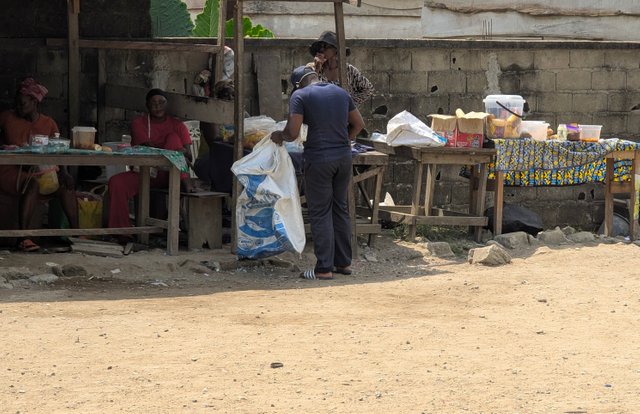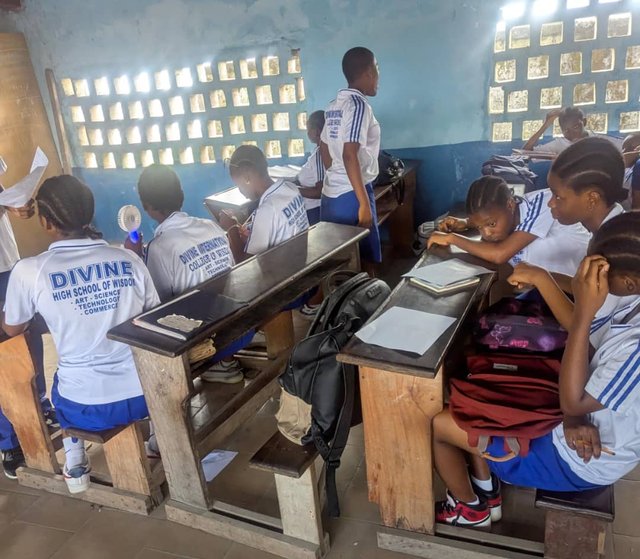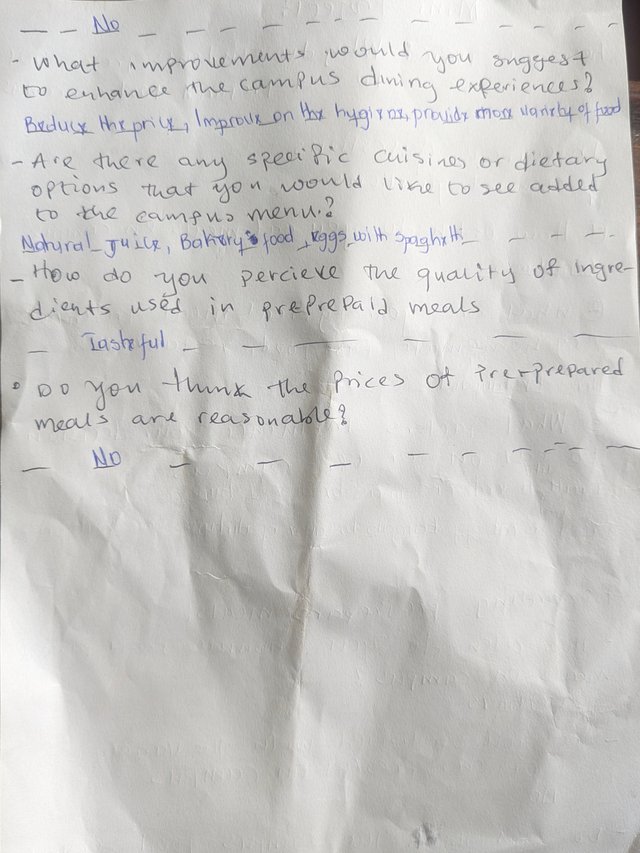SLC | S21W5 : Mini Research for Students

Mini Research for Students
Hello! Greetings to you. I'm so overwhelmed to have you on this week's learning challenge. Quite an amazing past weeks with a lot of exercises to learn from and practice, I am ready to do even more on this week 's learning challenge. To talk of, we are working on a mini project by the students.
Unlike the normal previous theoretical lessons, This license is going to be more of practical work which the students are asked to carry on a mini project and I am going to supervise them as they carry on. Before we get to choosing a minute topic for the students, we ought to know what a mini project is all about.
A mini project is the smallest scale project which is used to gain ammo inside about a particular topic or research. Mini projects are very lighter unlike a full-scale project and their specific aim is to come out with a light explanation or experiment which can be implemented in a full scale one. Mini scale projects are mostly carried on in institutions by Learners. This is done under the supervision of the teacher. Let's gets to the guidelines which we will use for our mini project.
- Determine the topic of the mini research for my students and why the research needs to be done by the students?
Over the past years of teaching, there have been a lot of things I have observed among students of which I wish I could have the time and strength to do a research on. I could do it right away. Now is the right moment to use this opportunity and carry out the research.
Monitoring students behavior during break time, I have noticed that students do not like to eat already prepared food which is sold and campus, rather they prefer snacks, And light food. I didn't bother to ask much about this until now. So far we are going to carry on a research project on the topic: why do students prefer not to eat prepared food on campus.

school eatery spot.
Since this research is based on Learners center, I believe they are going to have enough to say about this topic and equally proposed solutions today. Topic at large. Continually, we are going to carry on to the research methodology.
2• Formulate a problem /two, and develop some relevant interview questions to answer the problems.
| Problem 1: |
|---|
What are the primary factors that contribute to students' reluctance to consume pre-prepared meals on campus?
| Problem 2: |
|---|
How can campus food services improve their offerings to better cater to student preferences and dietary needs?
Interview Questions:
| General Questions: |
|---|
- How often do you eat meals on campus?
- What are do you think are your typical meal preferences (e.g., homemade, fast food, restaurant)?
- What factors interfere your decision to eat on or off-campus meal?
| Regarding Pre-Prepared Meals: |
|---|
- How frequent do you take pre-prepared meals on campus?
- What are your main worries or reservations regarding pre-prepared meals on campus?
- Do there exist particular aspects of pre-prepared meals that you find interesting (e.g., taste, texture, appearance)?
- Do you possess some nutritional restrictions or preferences which are not adequately talked about pre-prepared meals?
- Do you conform to the fact that pre-prepared meals are hygienic enough and safe for consumption?.
- How do you perceive the particularity and quality of various ingredients used in pre-prepared meals?
- Do you think the prices of pre-prepared meals are reasonably fair enough?
| Regarding Campus Food Services: |
|---|
- According to your observations what do you think of the overall quality of food served on campus?
- Do you confirm your satisfaction with the variety of food options available on campus?.
- Do you think the campus food services are good and fair enough to student feedback and suggestions?
- What improvements would you suggest to Better the campus food experience?
- Are there any specific cuisines or dietary options that you would like to see added to the campus menu?
3• Assign my students to conduct research using the prepared interview questions while observing every activity the students do, sharing photos and videos during the activity.
All right as this section says, it is self explain this involved. The practical place of the research. Here are students will be tasked to carry on the research using their prepaid material or research questions and gain feedback on the reasons why children prefer not to eat prepare food sold on campus.

Myself conducting survey
In the video you will see their interaction and then some potential answers which they will gain from this exercise which we are going to use and explain the next points as it proceed. This activity it's going to take fewer minutes and I'm expected and we are going to take a sample of the student population in order to save time.
 |  |
|---|
students carrying out research.
| Video |
|---|
students conducting research
4• Elaborate and elaborate on any interesting findings that occurred during the research and what are the conclusions of the research results?
My research took the form of a questionnaire which I distributed to the students and the discuss on their opinions based on their interest or dissatisfaction. Through this research , I was able to grab a few points which are going to help me as a guide in writing my project.
 |  |
|---|
students response
The interview revealed that students primarily rely on restaurant food for their meals. While hunger often drives them to eat on campus, concerns about cleanliness and high prices frequently lead them to opt for off-campus dining. Regarding pre-prepared meals, students consume them occasionally and express dissatisfaction with the limited variety of food options available on campus. Furthermore, they believe that the campus food services are not responsive to student feedback and suggestions.
To enhance student satisfaction and encourage on-campus dining, several recommendations are proposed.
Firstly, adding a variety of food options, like healthier choices and options catering to diverse dietary needs, is very essential .
Secondly, making priority of cleanliness and hygiene conditions in dining areas on campus and food preparation areas is crucial.
Thirdly, constantly seeking and incorporating student feedback and suggestions into food service decisions offered on campus is very important.
Lastly, providing more affordable meal options can attract students to campus dining e.t.c.
Additional affirmation, students suggested specific improvements to the campus dining experience, including amending prices, working on hygiene, providing more choices of food, and adding natural juice, bakery food, and eggs with spaghetti to the menu.
They also expressed concerns about the quality of ingredients used in pre-prepared meals and the inconvenience of high prices.
By applying these recommendations and addressing the specific worries posed by students, the campus can significantly improve its food services, work on student satisfaction, and create a more satisfactory on-campus dining experience.
5• 5. According to My observation observations, what are the weaknesses of the students during this research, and what are My steps in developing their analytical skills in the future?

The students' research, while insightful, revealed several weaknesses that could be addressed to enhance their analytical skills.
Firstly, the limited sample size, focusing on a subset of the class rather than the entire population, compromised the generalizability of the findings.
Secondly, the lack of consideration for the operational costs of a campus restaurant, such as high overhead expenses, limited the depth of their analysis.
Thirdly, external distractions hindered their focus, potentially impacting the quality and accuracy of their data collection and analysis.
To develop the students' analytical skills in future research, several steps can be taken.
Encouraging a much wider sample size will adhere a more representative and accurate reflection of the entire student body's preferences and opinions regarding campus food.
Additionally, looking into cost-benefit analysis will provide a more comprehensive appeal of the feasibility and sustainability of a campus restaurant and food services.
Creating a focused and controlled research environment can minimize distractions and improve the quality of data collection.
Furthermore, guiding students to critically evaluate their research methodology and findings will strengthen their analytical abilities. This can be resolved through discussions, reviews with peers, and reflective exercises.
By addressing these weaknesses and implementing mentioned strategies, the students can better their research skills and conduct more intensive and insightful analyses in the future.
Conclusion.
The research highlights that students' preference for off-campus dining stems from various factors, including concerns about food quality, limited variety, high prices, and cleanliness.
Additionally, the lack of responsiveness to student feedback and suggestions further contributes to their dissatisfaction with on-campus food services.
To improve student satisfaction and encourage on-campus dining, it is crucial to address these issues by increasing food variety, prioritizing cleanliness, actively seeking student feedback, and offering affordable meal options.
Rounding up, I would like to invite these persons to join me participate in this amazing contest.
| Cc: @miftahulrizky | @fantvwiki |
|---|
Credit to : @rafk
What did you do, can you explain this or are you being honest and admitting it.
Besides, you also did the same thing in Season 19 Week 1, using AI is cheating and polluting the Steemit platform that we love. Everyone is here writing with what they produce from their own thoughts, no matter how bad the thoughts are still valuable than having to use AI.
cc.
@steemcurator01
@steemcurator02
I always use This for my work sir.
Using your link I still have this
|
We only use tools that we have found to be accurate in our assessments and tests.
Alright. Thank you sir.
You can kindly run it again sir. If it's still give same no problem.